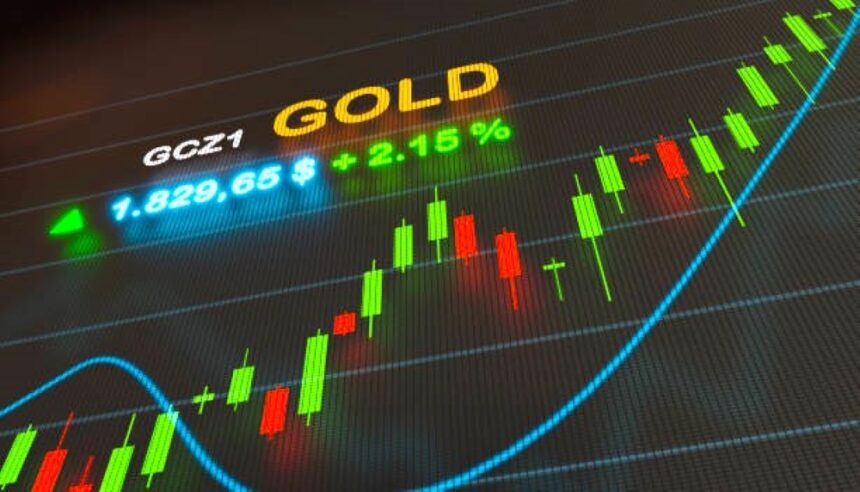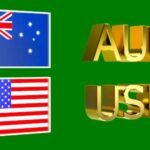Gold Price Slides Toward One-Week Low as Trade Optimism Grows; US-China Statement in Focus
Gold prices opened the week on a backfoot, shedding value during the Asian session on Monday as investors shifted their focus toward growing optimism surrounding a potential breakthrough in US-China trade negotiations. With a key joint statement from both nations expected shortly, market participants are trimming their exposure to safe-haven assets like gold.
Gold Retreats Amid US-China Trade Deal Hopes
The price of gold (XAUUSD) plunged to a one-week low, trading near the $3,253–$3,252 range in early Asian hours. This downswing came as reports from Switzerland indicated positive progress in high-level trade talks between the US and China. Investors are responding to the improved global risk sentiment by rotating out of non-yielding assets such as gold and into riskier instruments.
The decline in gold highlights the inverse relationship it holds with global confidence. As trade tensions thaw, risk appetite improves, and gold—often seen as a last resort during uncertainty—loses its immediate appeal.
US Dollar Stands Firm on Hawkish Fed and Cooling Recession Fears
Further compounding gold’s decline is the resilient strength of the US Dollar, which continues to hover near multi-week highs. This strength is underpinned by a combination of the Federal Reserve’s hawkish pause on interest rates and easing fears of a US economic recession.
Last week’s Federal Open Market Committee (FOMC) decision to hold rates steady, while signaling no rush to cut, has added a layer of support to the greenback. At the same time, economic indicators out of the US are painting a slightly more optimistic picture, further reducing the appeal of safe-haven assets like gold.
Gold’s Modest Rebound Signals Cautious Sentiment
Despite the initial drop, gold rebounded nearly $30 from its intraday low, suggesting that bearish momentum is not yet decisive. Traders are awaiting further clarity on the trade negotiations before making aggressive bets.
While both sides praised the outcome of talks, no explicit mention was made regarding the removal of existing tariffs. The US maintains tariffs of 145% on certain Chinese goods, while China holds 125% tariffs on US exports. The absence of any definitive tariff relief leaves investors wary, keeping the gold market from collapsing further—for now.
Key Drivers: What’s Moving the Gold Market?
1. Positive Signals from Switzerland
The US and China concluded trade talks in Switzerland with upbeat remarks from both sides. US Treasury Secretary Scott Bessent and Trade Representative Jamieson Greer announced that a deal had been achieved. On the Chinese side, Vice Premier He Lifeng hailed the meeting as a breakthrough, suggesting that a comprehensive joint statement will be released soon.
This has reignited global risk-on sentiment, pushing gold lower as investors allocate more capital to equities and industrial commodities.
2. US Dollar Strength on Fed’s Stance
The Federal Reserve’s hawkish hold on interest rates continues to support the US Dollar. Officials have made it clear they are not in a hurry to ease monetary policy, citing persistent inflationary pressures and a strong labor market.
This solidifies the greenback’s position and in turn, increases the opportunity cost of holding gold, which does not yield any interest.
3. Global Political Developments
Beyond trade news, political headlines also play a crucial role in shaping gold prices. Notably:
- Russian President Putin has agreed to initiate direct peace talks with Ukrainian President Zelenskyy on May 15.
- Hamas has announced plans to release the last known American hostage in Gaza and initiate direct talks with the US aimed at ceasefire efforts.
These developments have introduced temporary calm to otherwise volatile geopolitical issues, thereby reducing gold’s attractiveness as a geopolitical hedge.
What’s Next for Gold? Key Events to Watch
1. US Inflation Data – Wednesday
This week’s main macroeconomic highlight will be the US Consumer Price Index (CPI) release. Inflation data will shape market expectations around future Fed policy. A hotter-than-expected CPI print could boost the dollar further, putting renewed pressure on gold prices.
2. Fed Chair Powell’s Speech – Thursday
On Thursday, Fed Chair Jerome Powell is set to speak. Markets will listen closely for any forward guidance regarding rate cuts in the second half of 2025. If Powell leans hawkish again, it could send gold even lower.
3. US-China Joint Statement – Pending Release
Perhaps the most immediate catalyst is the anticipated joint statement from the US-China meeting in Geneva. If the statement includes details on tariff reduction or new trade channels, it could solidify the risk-on environment, pushing gold lower. Conversely, vague language may spark caution, limiting gold’s downside.
Technical Analysis: XAU/USD Bears Eye Further Weakness
Technically, XAU/USD is trading just above the 200-day moving average, a critical support zone. A break below the $3,250 level could open the door to deeper retracements toward $3,230 and then $3,200.
Momentum indicators like the RSI and MACD on the 4-hour chart are tilted slightly bearish, although oversold conditions could lead to short-term pullbacks. Bulls will look to defend the $3,250–$3,240 zone aggressively.
A clear break above $3,280 is needed for gold to reclaim upward momentum.
Conclusion: Caution Reigns Amid Trade Optimism and Fed Focus
The gold market finds itself at a crossroads. On one side, trade optimism and Fed hawkishness are driving risk-on sentiment and a strong US Dollar, both bearish for gold. On the other hand, traders remain cautious, awaiting clarity on tariffs and inflation.
Until more concrete details emerge from the US-China talks and US economic data, gold is likely to remain range-bound with a bearish bias. Traders should keep a close eye on mid-week events to confirm the next directional move.









